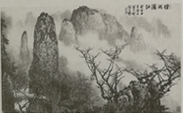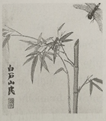-
Retired judge Davison hated all the quiet. Evy, his wife of 66 ears, had passed away, and he was lonely and sad in the months after her death. But he knew how to beat those feelings; he decided to build a pool.
Davison contacted a family-run company in Hopkins, Minnesota, that had built a pool for his previous house 40 years ago. “They did such a great job before and were still in business, so they came out and planned it,” Davison said.
Kevin, who works on new pools for the company, helped Davison with everything, from initial planning and completing contracts back in March to teaching him how to filter the water once the pool was finish in July.
“If You build it, they will come,” he thought. He invited all the neighborhood kids over to swim. Now it’s not so quiet anymore.
He hears the sounds of laughter and splashing as he sits on a chair in the shade, watching happy children play in his backyard.
“I knew they’d come.” 94-yvear-old Davison told KARE-TV.
Neighbor Jessica thought the judge was joking when he talked about putting in a pool until she saw the work starting. Now she and her four kids have been regulars since the pool was finished in July.
“It’s him spreading joy throughout our neighborhood for these kids.” Jessica said.
Davison’s pool includes a diving board and reaches nine feet in the deep end under the board. It’s especially welcome in a town that doesn’t have a public outdoor pool.
Although Davison has three adult children, he doesn’t have any grandchildren.
Jessica says she’s told him, “You kind of adopted our whole neighborhood of kids. These are your grandkids.”
The judge’s rules require that a parent or grandparent stay while the children are swimming. Once the kids leave. he likes to swim, too.
Davison tells KARE-TV that he realizes that putting in the pool didn’t make a lot of financial (经济的) sense for an old man. But that didn’t matter to him.
“I’m not sitting by myself looking at the walls.” he says. “What else would you think of doing where you could have a whole bunch of kids over every afternoon?” The 94-year-old judge now hears laughter all day as he watches children splash in his backyard pool.
1.Why did Davison build a swimming pool?
A. To remember his dead wife. B. To earn some money for a living.
C. To fight against his loneliness. D. To please the kids in the neighborhood.
2.What does the underlined word “they” in Paragraph 4 refer to?
A. The neighborhood children. B. His three adult children.
C. Reporters from KARE-TV. D. The workers who built the pool.
3.What rules do children have to follow while swimming in the judge’s pool?
A. They shall wear life jackets. B. They shall be in company with the adults.
C. They shall receive some training. D. They shall get their parents’ permission.
4.What can we learn from the story?
A. Action speaks louder than words.
B. True success comes from spiritual riches.
C. The value of life lies in respect and love.
D. One’s search for happiness brings others great joy.
-
According to Gallup’s annual Global Emotions report, people all over the world are more stressed than ever before. Nearly 40 percent of adults from 146 countries reported having experienced worry or stress. And it isn’t just adults experiencing these high stress levels; experts have also observed a rise in the number of children and youth. According to another study published in EurekAlert, one in five students are so stressed that they’ve considered self-harm or suicide. The immense stress they face has been proven to be harmful to their health.
It’s no news that stress can trigger anxiety, depression and self-harming behaviors, and cause sleep problems, social withdrawal, angry outbursts and obsessive-compulsive behaviors. We are moving towards a society where an increasing number of us face mental health problems that stem from high stress levels. If stress increases rapidly, how can we fight it?
It might sound easier said than done but studies have shown that the best way to deal with stress is to change your perception(认识) of it.
The University of Wisconsin conducted a study of 30,000 Americans. Researchers asked them how much stress they’d experienced in the past year and whether they believed stress was harming their health. The researchers concluded that people in the study who were exposed to large amounts of stress and viewed stress as harmful had 43 percent higher risk of dying than people who viewed stress as a helpful response.
More interestingly, those with more positive perceptions of stress had the lowest risk of death out of all involved in the study, even lower than those experiencing very little stress.
A separate study conducted by researchers from King’s College London and the University of Marburg showed students with more negative beliefs about stress experienced more physical symptoms, such as headaches, tension and tiredness during a stressful end-of-semester exam period, compared with students who had more positive beliefs about stress.
These two studies have proven that stress itself is not actually bad. It is the belief that stress is bad that is bad.
1.According to the passage, we can learn that ________.
A. more and more people suffer from higher stress levels
B. one in five adults in America has considered self-harm
C. 30,000 children have experienced stress in the past year
D. youth are more likely to believe stress is helpful than adults
2.The research by the University of Wisconsin concludes ________.
A. stress generally benefits us
B. stress leads to a higher risk of death
C. people under stress often perform better
D. optimism cuts the risk of stress-related death
3.The separate study in Paragraph 6 is mentioned to ________.
A. put forward a new idea B. support the above findings
C. compare different findings D. argue against the above point
4.What would be the best title for this passage?
A. Stress Affects People of All Ages
B. We Are Winning the Battle against Stress
C. Stress Damages Your Health if You Think So
D. Negative Beliefs about Stress Cause Tension
-
What Is Social Media?
Not many people ask the question “what is social media?” anymore. Social media has been around for years now, and most of us would probably describe it as any Internet medium that can be used to share information with others, including blogs, forums, applications, games, websites and other stuff.
But let me ask you this: what exactly is so “social” about sitting before a computer setting up a blog and blogging for days without anybody reading it, or scrolling through your Facebook feed of information from 500 friends you barely know? If you ask me, it can be way more anti-social than anything.
Social media is not a “thing”. It’s not just Facebook, WeChat and Weibo It’s more of a frame of mind and a state of being. It’s about how you use it to improve your relationships with other people in real life. However, we tend to rely on technology and social media so much that it can actually tear apart those relationships.
Social media isn’t about numbers. When someone says “social media,” web giants like Facebook, Twitter, WeChat and Weibo instantly pop into our minds, often because they have more updates, more friends, more followers, more links, more photos, more everything. We tend to get distracted by the number game, thinking “volume, volume, volume”. It’s led to a lot of meaningless noise and information overload. As the old saying goes, quality over quantity is usually the way to go. So, social media is not just about lots of people aimlessly pushing around lots of information.
Social media needs to have an “IRL” factor-an Internet slang standing for “In Real Life”. It should affect how a person thinks or acts offline. After all, social media shouldn’t be an end in itself. It was built to enhance your actual social life, in real life. Take for example an event that a person attends because they are invited by the host on Facebook through a Facebook event page. Something like that definitely has the IRL factor. Likewise, a WeChat photo that touches someone so much that they feel the need to bring it up and describe it to someone else during a dinner date also has the IRL factor.
So, is it really considered to be social to spend an hour scrolling through photos on Weibo, with no thoughtful or emotional effect and no interaction with others? In fact, there is no wall between real life and Internet life where true social media exists. Social media is not a specific place on the Internet or just a thing you use to see what other people are doing. It’s all about creating meaningful experiences and relationships wherever you may be.
1.What does the underlined phrase “tear apart” in Paragraph 3 mean in the text?
A. Destroy. B. Change.
C. Continue. D. Strengthen.
2.The writer thinks that social media should be ________.
A. a number of websites where people communicate
B. a set of social tools like Facebook. WeChat and Weibo
C. a collection of online applications where ideas are exchanged
D. a group name for online platforms used to strengthen meaningful relationships
3.According to the author, which of the following cases has an IRL factor?
A. Updating Facebook on a regular basis.
B. Following new friends in real life on Facebook.
C. Visiting a museum with friends after reading a story on Weibo.
D. Reading Twitter to see what other people are doing and thinking about.
4.What is the author’s purpose of writing this article?
A. To explain the importance of social media.
B. To inform the negative effects of social media.
C. To call on readers to use social media to promote real social life.
D. To encourage readers to interact with others in real life more often.


